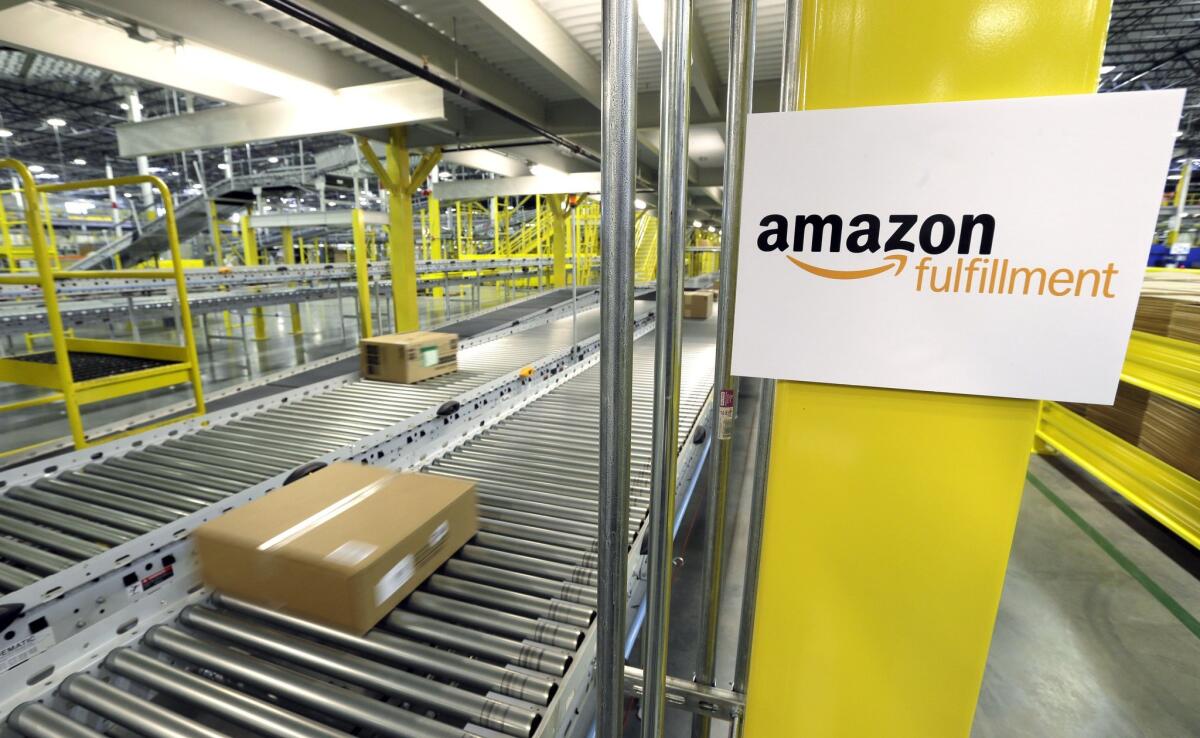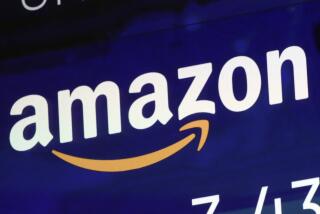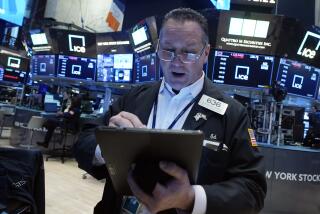Amazon’s stock dives, but it’s because of a ‘good problem’

A “good problem”: Amazon missed its profit target because it spent more fulfilling the high demand of its products and services.
- Share via
San Francisco — For a stock that sank 14% in after-hours trading Thursday, analysts aren’t feeling too bad about Amazon.com Inc.
The e-commerce giant’s stock took a hit after it wasn’t able to match investor expectations in the fourth quarter.
Despite the Seattle company’s profit more than doubling to $482 million, or $1 per share, from $214 million last year, it fell short of the $1.55 analysts expected. Revenue rose 22% to $35.75 billion from $29.33 billion last year, but it, too, fell short of estimates, which averaged $39.9 billion.
The stock also sank during trading Friday, dropping about 8%, to $586.60, as of 9:15 a.m. PT.
This doesn’t quite spell trouble for the company, though.
The consensus among analysts was that Amazon missed its profit target because of higher-than-expected fulfillment and shipping expenses caused by excess demand. This is a “good problem,” Mark S. Mahaney and Jim Shaughnessy, analysts with RBC Capital Markets, said in a note to clients.
See more of our top stories on Facebook >>
“Amazon didn’t have the capacity to handle the demand and had to resort to less-efficient/more expensive logistics solutions, because Amazon refuses to skimp on customer satisfaction,” Mahoney and Shaughnessy said. “The ‘problem’/‘costs’ will surely be ‘fixed,’ and in the meantime, Amazon’s customers grow more loyal.”
Macquarie Capital analyst Ben Schachter echoed that sentiment, pointing to too much demand for Amazon’s products and services as a key driver in the company’s missing analysts’ estimates.
“This is a high-class problem to have,” Schachter said. “However, it is a problem until solved.”
He reiterated his “Outperform” rating for the company.
“The bottom line is that at the end of the day, we want to own a company that has too much demand for its products and services.”
Another reason for missing the target, which comes as no surprise to anyone who has followed Amazon: It continues to reinvest in the business.
The company spent heavily in original content, exclusive programming and Prime Music, driving content spending estimated at well above $3 billion in 2015. Wedbush Securities analysts expect that investment to grow by $1 billion a year, slowing profit growth.
And that’s really the crux of it, according to Monness, Crespi and Hardt’s James Cakmak, who downgraded his rating on Amazon from “Buy” to “Neutral” earlier in the month. The company has a bright future, but now may not be the best time to buy the stock.
On the one hand, he said in a note to investors, he sees Amazon creating a “competitive moat around its ecosystem.” On the other, the amount the company is investing back into its business to maintain that competitive edge may in the short term return less to investors.
“We believe even winners need to take breathers sometimes and recalibrate,” he said. “With a multi-year horizon, we are still very much positive on the name.”
Twitter: @traceylien
MORE FROM BUSINESS
U.S. economic growth slows to 0.7% at the end of last year
StartEngine wants early piece of new crowdfunding market
U.S. stocks rise on strong earnings reports and Japan stimulus







